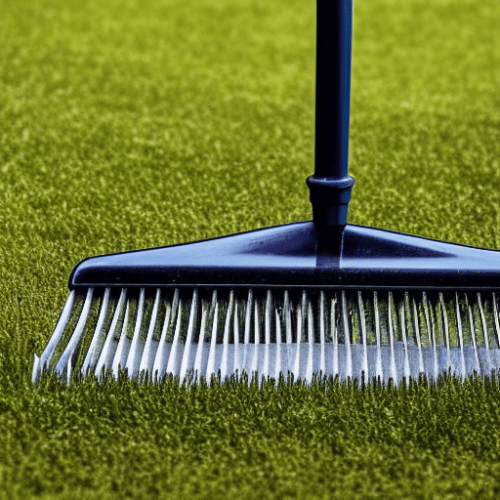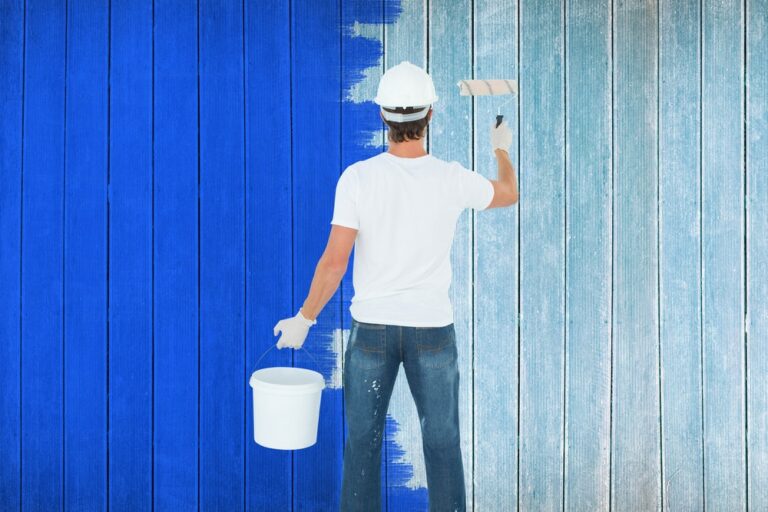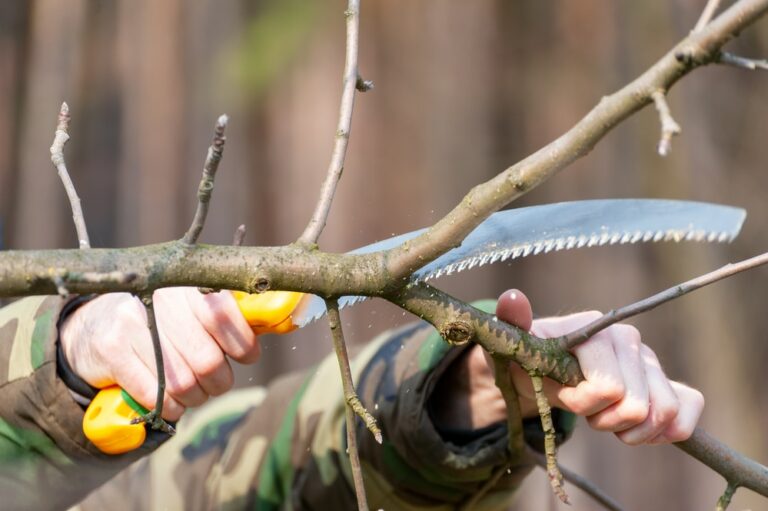If you’re about to plant some new grass seed or enhance your lawn, then aerating your lawn is one of the best things you can do to get the earth in good condition. Lawn aeration encourages better grass growth throughout the warm season and helps to improve the health of your grassroots through the cool season. In addition, a good strategy for aeration can significantly improve the quality of your grass.
Of course, the easiest way to get your lawn in great shape is to use a lawn aerator to add more oxygen to the soil and loosen compacted soil, making it easier for water and nutrients to get to your seeds. Fortunately, if you don’t have a lawn aeration tool of your own, there are some other ways you can aerate your soil instead. Here’s an easy guide on how to aerate a lawn without an aerator.
What Does Aerating Your Lawn Do?
Before you can begin looking for the right way to aerate your lawn without a dedicated tool, it’s worth knowing what lawn aeration is good for. Essentially, aerating your lawn is something you’ll need to do when the compacted soil in your garden starts to become harder or covered with thatch. It means that water, oxygen, and nutrients can’t reach the roots of your plants and grass as easily.
Many gardening professionals use an aeration tool after they mow the lawn during certain times of the year to ensure that they can get the best results from their season grass. In addition, an aeration tool makes it easy to aerate your lawn as part of a standard lawn care strategy.
There are various kinds of aeration tools to help you improve the quality of your turf and grassroots. Essentially, this tool places holes in the soil around your garden to begin to loosen the earth and allow root growth to improve by spreading the share of nutrients in the soil. In addition, aeration helps to prevent dull-looking grass growth. However, you can consider aerating by hand too.
Are There Benefits to Aerating by Hand?
Sometimes, planning to invest in the aeration of your soil by hand is better for your garden than using an aerating tool. That’s because you have a lot more control when you’re dealing with the surface using a rake or a hand-held spading fork. Many people worried about the environment also prefer to deal with their gardens and lawns by hand, rather than using machines that could influence their carbon footprint.
You can get similar results with a device that allows you to remove plugs of dirt or a garden fork, and you won’t have to spend a fortune on different sizes of cores for your aeration tools or other products. Instead, you can simply use products you already have around the home or garden.
If you only aerate your lawns a couple of times each year, it’s usually much more affordable to use a fork, tine, or homemade product to create holes than it is to buy a specialist product.
How to Aerate Your Lawn Without an Aerator
If you don’t have an aerating tool, the first step in looking after your lawn or turf is figuring out when you need to start aerating. Usually, the best time to begin hand aeration is when the soil becomes compacted in your garden. You might notice that the surface of your lawns looks different colours in different areas, which means that some patches of grass aren’t as healthy as others.
You might also notice that it’s very difficult to dig into your soil when you want to plant something. If you’re not sure how compacted your lawns are, you can test the quality of the grass by pressing a screwdriver into the grass a couple of inches. If you can’t push the screwdriver more than a couple of inches past the surface, this could indicate a solid layer of compaction.
It’s also worth checking for compaction in your lawn if you’ve recently moved into a new home. It isn’t easy to know how deep the previous owner used to push their tools for aerating the lawn or using an aerator at all.
Another sign your lawn needs aerating is the presence of thatch throughout healthy grass. Thatch is a layer of debris, and organic matter made up of roots, stems, and shoots that have joined together between the grassroots and the surface of the soil. The build-up of thatch is a common problem for many kinds of grass, as it stops the right air and spring nutrients from getting to the roots of the plants.
What Can You Use to Aerate a lawn?

If you don’t have a special machine for aerating the lawn, then your easiest option might be to use a rake, fork, or tine for aeration instead. Using a tine means you push spikes a few inches into your soil in various areas. Then, you punch holes into the earth, anywhere up to 6 inches deep, to remove any compaction issues.
You can also use tools that pull cores or plugs of earth out of the soil and grasses one section at a time. A pipe is a great tool for aeration if you don’t want to push solid spikes or tines into the grass. It will help you pull chunks of solid dirt out of the core of the earth to give the garden soil more space to settle.
A pitchfork, rake or spading fork is another great option for someone who doesn’t have money for dedicated aerators. If you’re only aerating a small amount of ground, and you don’t want to hollow out parts of the compacted earth, you can dig your fork into the compaction to remove plugs deposited onto the surface of the lawn.
Before you begin the manual process of aeration for your grasses and lawns, follow the same steps you would take to prep the ground for an aeration machine. It usually means using your rake to remove any large amounts of thatch from the ground. You should also mow the grass to make it easier to see the quality of the lawn when using your aerators.
It’s also a good idea to water the sod or grass well before you use any lawn aeration tools. It will simplify the process of removing the compaction and the cores in your soil. If you want to overseed the garden after you hollow out parts of the garden with your aeration tools, you should usually wait for around four weeks and top dress the soil with higher-quality soil too.
Other Ways to Aerate Your Lawn
If you don’t want to aerate your lawn with a hollow tine, fork, or something similar, there are other ways to aerate clay soil and garden soil. For instance, one common DIY option is to repurpose an oil drum by attaching hollow tines to the outside, and then rolling the drum around the garden. Of course, you will need to clean out the hollow tine to ensure you’re not pushing the cores of soil compaction into other parts of the lawn.
Some people also make their aerator shoes to help speed up the lawn care process when it’s time to aerate and plant seed. After you’ve used the lawnmower to remove excess warm-season grass, you can create a couple of aeration shoes by adding some nails to some thick boards and strapping the smooth side of the boards to your feet.
All you need to do once you’ve created your aeration shoes is walk around the turf to create holes all over your lawn. You can perform this kind of lawn care in late spring when the weather is starting to get a little colder if you’re worried about creating too many gaps in your lawn.
Other options include:
- Repurposed lawn rake aerator: you can make a simple aerator out of an old rake and a good piece of wood. All you need to do is use your rake to steady your aerator and give yourself a brace for pushing it into the ground.
- Plastic bucket aerator: Another option might be to use a large plastic bucket. All you need is a bucket you can place a few nails in the bottom of and something safe to use as a handle.
- Old metal pipe: As mentioned above, a metal pipe can be a great tool to use as an aerator if you need to aerate without using a professional machine. A good bit of pipe will help you remove soil cores as you aerate the lawn, similar to a hollow tine aerator. It will remove compacted soil and allow nutrients to reach your grass as you water the lawn during the warm and cool seasons.
Keeping Your Lawn in Great Condition Without Aerators
Knowing how to core your lawn without aerators or using DIY solutions to remove a few compacted core sections from your lawn will help you keep your garden in excellent condition. The more air and water capable of getting to the roots of your plants, the better your grass will grow. Fortunately, you can always take a manual approach to give air to your lawn if you don’t have a professional solution.
The manual strategies mentioned above on how to aerate a lawn without an aerator will help you create crucial holes in your lawn turf when you need to improve grass seed growth. This, in turn, will help you to get the right water and nutrients for your plants.
Good luck with your lawn aeration experience.







